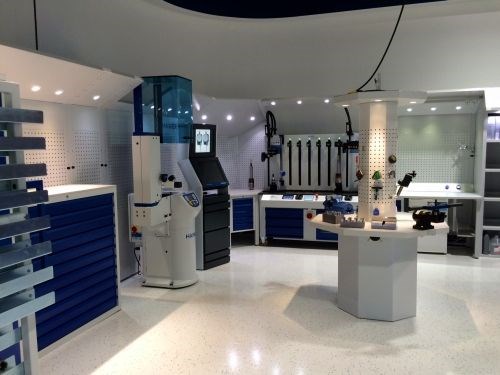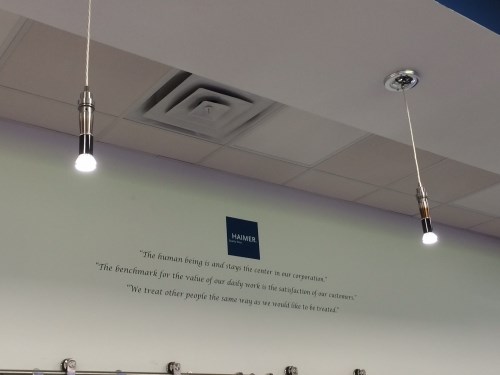Inside Haimer’s Expanded North American Headquarters
The company’s shrink-fit, balancing and tooling technologies are on display in a new 25,000 square-foot facility.
Share





Haimer’s 25,000-square-foot facility includes a training and demo area for the company’s range of shrink-fit, balancing and tooling technology.
Recently, I got to visit Haimer’s newly expanded North American headquarters in Villa Park, Illinois. The company’s facility has grown from 9,000 to 25,000 square feet where it maintains $5.5 million in inventory for its range of tool holders, shrink fit machines, balancing machines, 3D-sensors and cutting tools.

This area I call a tool room for lean manufacturers.
The expansion includes new training area for customers and distributors as well as a showroom/demo area with high-speed VMC. The company also has a five-axis tool grinding machine and extends its German hospitality to visitors with a large reception area and 25-foot-long bar.

The tool holder lights above the 25-foot-long hospitality bar were a nice touch.
As I toured the facility, I called to mind a number of articles we’ve written about the company’s tooling technology. For example:
- The value of balancing for low-rpm operations;
- The benefits of an alternate coolant delivery system;
- The importance of shrink-fit technology for challenging materials; and
- A tool holder safety system that provides pull-out protection for tools in high performance cutting.
Related Content
-
Simulation and Tooling Secure High-Value Work
Simulation software and careful attention to tooling parameters have enabled Major Tool to take on ambitious projects with its complex machinery.
-
How to Troubleshoot Issues With Tool Life
Diagnosing when a tool is failing is important because it sets an expectation and a benchmark for improvements. Finding out why gives us a clue for how to fix it.
-
Quick-Change Tool Heads Reduce Setup on Swiss-Type Turning Centers
This new quick-change tooling system enables shops to get more production from their Swiss turning centers through reduced tool setup time and matches the performance of a solid tool.






















